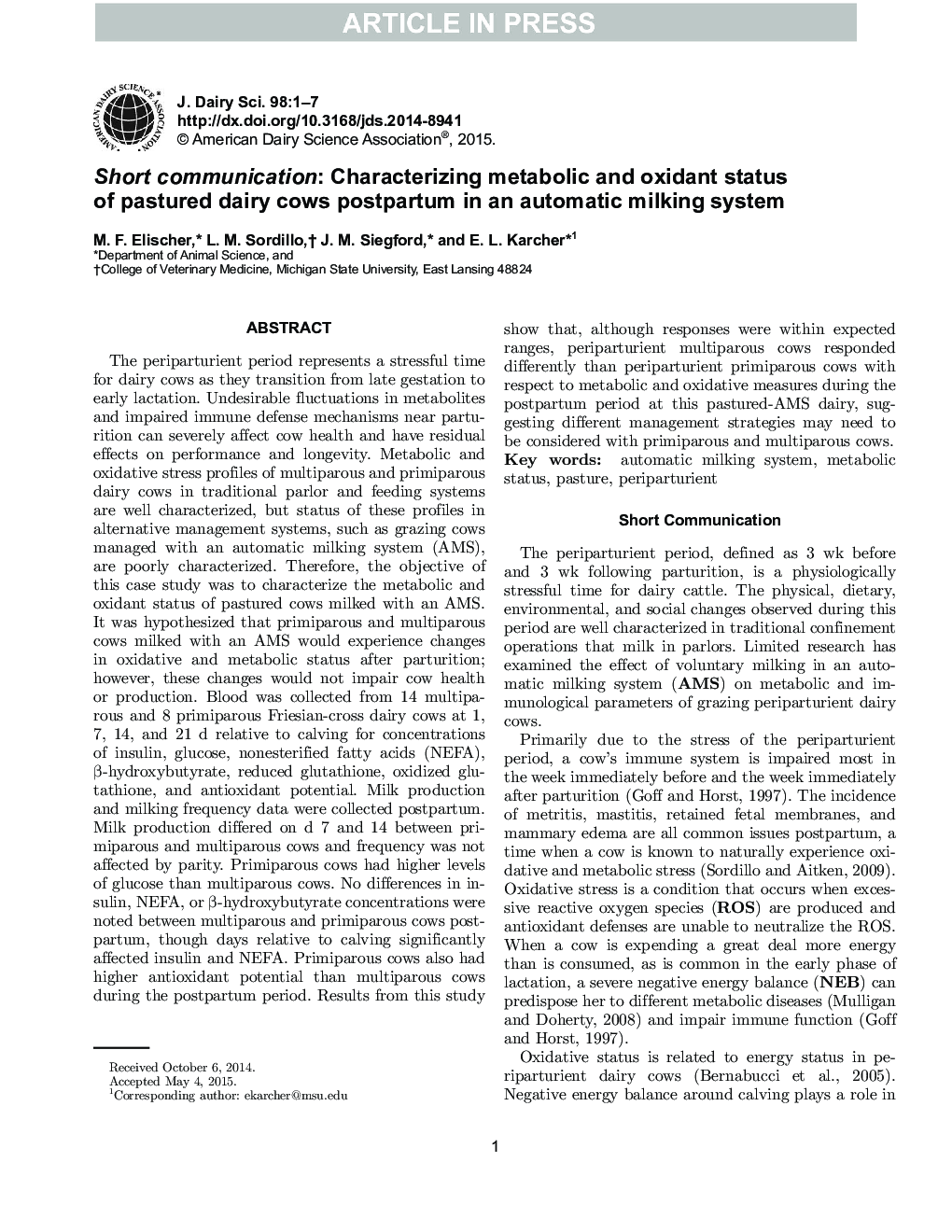| کد مقاله | کد نشریه | سال انتشار | مقاله انگلیسی | نسخه تمام متن |
|---|---|---|---|---|
| 10974917 | 1108029 | 2015 | 7 صفحه PDF | دانلود رایگان |
عنوان انگلیسی مقاله ISI
Short communication: Characterizing metabolic and oxidant status of pastured dairy cows postpartum in an automatic milking system
ترجمه فارسی عنوان
ارتباط کوتاه: مشخص کردن وضعیت متابولیک و اکسیدان گاو شیری شیرده در شیرخواری در سیستم دوشش اتوماتیک
دانلود مقاله + سفارش ترجمه
دانلود مقاله ISI انگلیسی
رایگان برای ایرانیان
کلمات کلیدی
موضوعات مرتبط
علوم زیستی و بیوفناوری
علوم کشاورزی و بیولوژیک
علوم دامی و جانورشناسی
چکیده انگلیسی
The periparturient period represents a stressful time for dairy cows as they transition from late gestation to early lactation. Undesirable fluctuations in metabolites and impaired immune defense mechanisms near parturition can severely affect cow health and have residual effects on performance and longevity. Metabolic and oxidative stress profiles of multiparous and primiparous dairy cows in traditional parlor and feeding systems are well characterized, but status of these profiles in alternative management systems, such as grazing cows managed with an automatic milking system (AMS), are poorly characterized. Therefore, the objective of this case study was to characterize the metabolic and oxidant status of pastured cows milked with an AMS. It was hypothesized that primiparous and multiparous cows milked with an AMS would experience changes in oxidative and metabolic status after parturition; however, these changes would not impair cow health or production. Blood was collected from 14 multiparous and 8 primiparous Friesian-cross dairy cows at 1, 7, 14, and 21 d relative to calving for concentrations of insulin, glucose, nonesterified fatty acids (NEFA), β-hydroxybutyrate, reduced glutathione, oxidized glutathione, and antioxidant potential. Milk production and milking frequency data were collected postpartum. Milk production differed on d 7 and 14 between primiparous and multiparous cows and frequency was not affected by parity. Primiparous cows had higher levels of glucose than multiparous cows. No differences in insulin, NEFA, or β-hydroxybutyrate concentrations were noted between multiparous and primiparous cows postpartum, though days relative to calving significantly affected insulin and NEFA. Primiparous cows also had higher antioxidant potential than multiparous cows during the postpartum period. Results from this study show that, although responses were within expected ranges, periparturient multiparous cows responded differently than periparturient primiparous cows with respect to metabolic and oxidative measures during the postpartum period at this pastured-AMS dairy, suggesting different management strategies may need to be considered with primiparous and multiparous cows.
ناشر
Database: Elsevier - ScienceDirect (ساینس دایرکت)
Journal: Journal of Dairy Science - Volume 98, Issue 10, October 2015, Pages 7083-7089
Journal: Journal of Dairy Science - Volume 98, Issue 10, October 2015, Pages 7083-7089
نویسندگان
M.F. Elischer, L.M. Sordillo, J.M. Siegford, E.L. Karcher,
